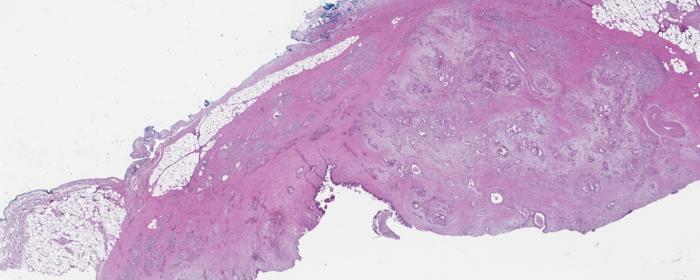Scientists at the Van Andel Institute in Grand Rapids, Michigan, have achieved a groundbreaking advancement in the early diagnosis of pancreatic cancer through the development of a novel method for identifying and classifying cancer cell subtypes. This innovative technique revolves around the analysis of glycans—sugar molecules that adorn the surfaces of cells and play crucial roles in cellular communication and recognition. Pancreatic cancer, notorious for its lack of early symptoms, poses significant challenges for diagnosis and treatment. The new research promises to provide insights into the precise nature of pancreatic tumors by examining the unique glycan signatures present in these cells, paving the way for tailored therapeutic approaches.
The method, known as multiplexed glycan immunofluorescence, represents a significant technological leap. By utilizing advanced imaging techniques and sophisticated software, researchers can effectively capture the specific combinations of glycans associated with various pancreatic cancer cell subtypes. Each subtype of cancer cell often exhibits distinct glycan profiles that can provide valuable information about the tumor’s characteristics and potential treatment responses. This personalized approach holds the potential to enhance diagnostic accuracy and improve outcomes for patients suffering from pancreatic cancer.
Pancreatic cancer is notoriously aggressive and often remains asymptomatic in its early stages. As a result, it is estimated that only 15% of patients receive a diagnosis early enough to pursue surgical intervention. The ability to discern different subtypes within pancreatic tumors is critical, as distinct subpopulations of malignant cells may exhibit differing responses to treatment modalities. By achieving a detailed understanding of the cellular makeup of tumors, clinicians can create more effective treatment plans tailored to the specific characteristics of the cancer each patient faces.
In a compelling statement, Dr. Brian Haab, the study’s corresponding author and a renowned expert in cancer research, emphasized the significance of this advancement. He noted that the ability to identify specific cancer cell subtypes provides invaluable insights, enabling healthcare professionals to better tailor their therapeutic strategies. The work emphasizes a shift towards precision medicine in oncology, where treatments can be designed based on the individual biochemical landscape of a patient’s tumor.
The glycan signatures central to this research were identified by analyzing tumor tissues collected from patients. Following this initial discovery, the team refined their approach to detect glycans that are secreted into the bloodstream by cancer cells. This methodological refinement is crucial because the ability to perform blood tests is significantly less invasive for patients compared to surgical biopsies. As glycan analysis becomes a standard element of diagnostic procedures, patients may experience a more patient-friendly pathway to early detection and diagnosis.
Currently, the multiplexed glycan immunofluorescence method is still in development and has not yet been implemented in clinical labs. However, the research team expresses optimism that, within a few years, this innovative method could become a standard diagnostic tool for pancreatic cancer. Until then, ongoing validation studies will further enhance the reliability of this technique, exploring its capabilities not only for pancreatic cancer but also for identifying subtle signatures associated with other gastrointestinal malignancies.
The findings of this research are documented in the distinguished journal Science Advances. This publication underscores the importance of sharing new scientific knowledge with the broader research community, which is essential for fostering collaboration and accelerating the development of novel therapeutic approaches. Disseminating information about such advancements aids in building a foundation for subsequent studies and clinical trials that could follow.
Pancreatic cancer researchers face myriad challenges, not least of which is the intrinsic complexity of pancreatic tumors, which can encompass multiple subtypes of cancer cells coexisting in a single tumor mass. The presence of these diverse cell populations complicates treatment decisions, as different cells may respond variably to standard therapies. The new glycan identification method promises to simplify this complexity by providing a clearer picture of the cellular dynamics at play.
The implications of glycan profiling extend beyond pancreatic cancer; researchers are hopeful that this approach could also be leveraged to characterize other forms of cancer. By applying similar techniques to various malignancies, it may be possible to glean insights into the tumorous landscape across multiple types of cancer, leading to broader applications in oncology research and clinical practice.
The research team, including co-first authors Braelyn Binkowski and Zachary Klamer, alongside numerous collaborators, is deeply committed to the validation and refinement of this technique, ensuring that it meets the rigorous standards required for clinical application. As the team delves deeper into their investigation, they are keen to discover the glycan signatures of rarer malignancies, further augmenting the repertoire of tools available to oncologists.
Additionally, this project has received significant financial support from the National Cancer Institute, part of the National Institutes of Health. This endorsement not only reflects the project’s value but also bolsters the necessary funding for future explorations, potentially yielding far-reaching benefits for cancer patients.
In conclusion, the advancement represented by multiplexed glycan immunofluorescence highlights a paradigm shift in cancer diagnostics, focusing on the intricate biochemical nuances that characterize individual tumors. As this innovative technique moves toward clinical application, the hope is that it will enable earlier diagnoses and more personalized treatment plans, thereby improving survival rates for pancreatic cancer patients and enhancing their quality of life.
Subject of Research: Identification and classification of pancreatic cancer cell subtypes using glycan signatures.
Article Title: Multiplexed glycan immunofluorescence identification of pancreatic cancer cell subpopulations in both tumor and blood samples.
News Publication Date: April 9, 2025.
Web References: http://www.vai.org/
References: https://www.science.org/doi/10.1126/sciadv.adt0029
Image Credits: Courtesy of the Haab Lab, Van Andel Institute.
Keywords: Pancreatic cancer, Glycans, Cancer diagnostics, Precision medicine, Cancer cell subtypes, Tumor analysis, Multiplexed glycan immunofluorescence, Blood tests, Early detection, Oncology research, Personalized treatments.




